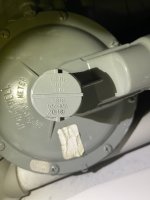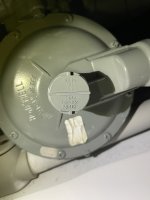The rating is 275 at a 1/2" w.c difference.
If you have a high pressure line from the street to the meter, the meter might be fine.
As shown in the earlier example, the capacity was about 2.11 times higher if you allow for a 2" w.c pressure drop.
So, your meter can probably do about 580 cubic feet at a 2" w.c pressure drop.
In any case, your installer should verify the pressure static and dynamic to make sure that it is safely in the correct range.
If you have a high pressure line from the street to the meter, the meter might be fine.
As shown in the earlier example, the capacity was about 2.11 times higher if you allow for a 2" w.c pressure drop.
So, your meter can probably do about 580 cubic feet at a 2" w.c pressure drop.
In any case, your installer should verify the pressure static and dynamic to make sure that it is safely in the correct range.
I asked and said all my appliances and heater add to about 570,000 and he said these are underrated and it should be fine.
Last edited:












